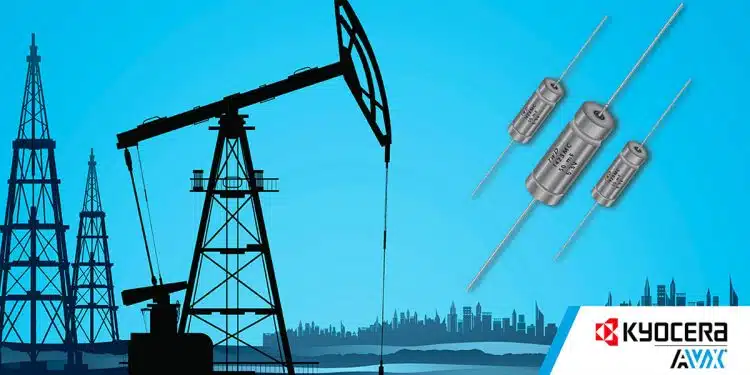KYOCERA AVX, a leading global manufacturer of advanced electronic components engineered to accelerate technological innovation and build a better future, added a new 100mF/3V rating to its TWD High-Temp Max-Cap (HTMC) Series hermetically sealed and axial leaded DLA T4-size wet tantalum capacitors.
Initially released to market in 2016 with only two ratings (25mF/10V and 50mF/6.3V), the TWD HTMC Series delivers extremely high capacitance values, comparable to those of supercapacitors, as well as stable, high-reliability long-lifetime performance in industrial, oil & gas, defense, and avionics applications exposed to environmental hazards including mechanical shock, high-frequency vibration, and operating temperatures up to 175°C.
TWD HTMC Series capacitors are manufactured using high-purity tantalum powders and KYOCERA AVX’s well-established wet tantalum design, which features a hermetically sealed welded tantalum can with a unique cathode system that enables extraordinary CV/cc performance and an optional insulation sleeve.
They exhibit rugged resistance to shock and vibration per MIL-PRF-39006, stable electrical parameters over the full range of operating temperatures extending from -55°C to +175°C, and outstanding reliability, offering extended lifetimes of up to 10,000 hours at +105°C and rated voltage and up to 2,000 hours at +175°C and rated voltage.
Ideal applications for the series include DC hold-up and low-frequency pulse circuits in specialized industrial, avionics, defense, and oil & gas applications that require high-reliability high-capacitance performance at high temperatures, such as downhole drilling equipment.
“We are very pleased to expand on our field-proven TWD HTMC Series hermetically sealed and axial leaded wet tantalum capacitors,” said Allen Mayar, Global Product Manager at KYOCERA AVX. “These capacitors are produced and qualified at our highly accredited facility in Lanskroun, Czech Republic, and deliver high-reliability long-lifetime performance and extremely high capacitance, comparable to that of supercapacitors, in harsh-environment applications with operating temperatures up to 175°C.”
TWD HTMC Series capacitors are currently available in three ratings — 25mF/10V, 50mF/6.3V, and 100mF/3V with ±10% and ±20% capacitance tolerance — and in standard DLA T4 cases with an optional insulating sleeve and one of two termination finishes: Sn/Pb (60/40) or RoHS-compliant and lead-free compatible pure matte tin. They are shipped in tray packs and suitable for automatic mounting and soldering. Current lead-time for the series is 10–14 weeks.































